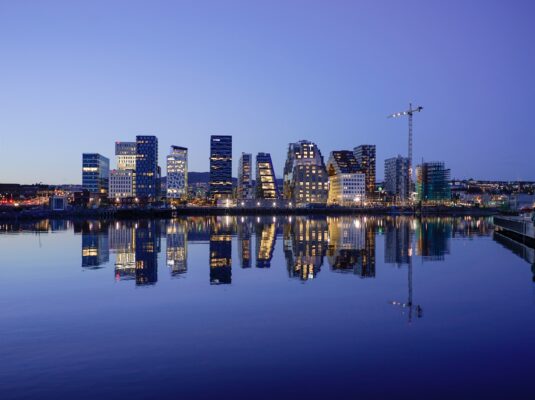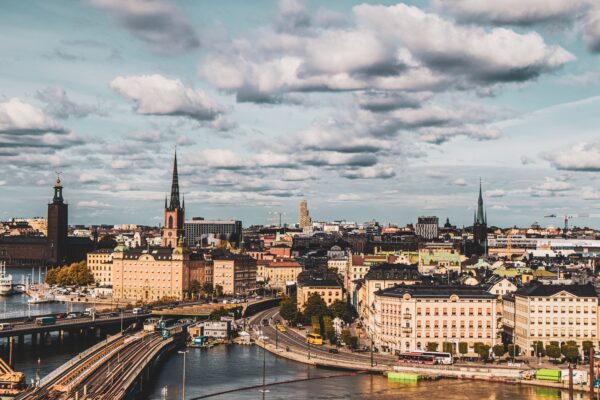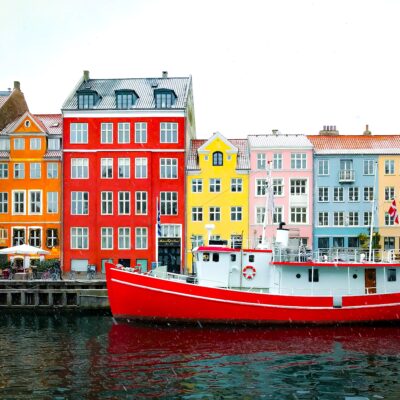
The world is becoming increasingly urbanized, and if you ask a hippie soul like me, it is becoming overwhelmingly urbanized. Cities hold great value for the overall improvement of society and currently home more than half of the world’s total population with the number only expected to grow in the future. With urbanization at this pace, comes a number of challenges like the depletion of resources, congestion, increased pollution and population among many others. This highlights the importance of sustainable cities by providing a blueprint for urban development which not just prioritizes the well-being of the people but also the planet.
Sustainable cities are designed to minimize the impact of environmental exploitation while promoting economic progress and social equity. These cities prioritize the use of renewable energy resources, promote green transportation options and also invest in sustainable infrastructure. Additionally, sustainable cities also allow their residents to upgrade their lifestyles by providing access to quality housing, education, healthcare, and other services, creating a livable environment that provides well-being for all.
Thus, the importance of sustainable cities cannot be underestimated. The concept of sustainable cities holds great value in achieving the United Nations Sustainable Development Goals (SDGs) which aim to create a just, equitable, and sustainable world by 2030. But why exactly should governments invest in creating sustainable cities? Let’s explore –
- Environmental Protection: Reducing carbon emissions is one of the biggest challenges right now in the world. Sustainable cities prioritize the protection of the environment by reducing carbon emissions by adopting green infrastructure and increasing the use of renewable energy. Mitigating the negative impact of climate change and protecting natural resources is another great challenge humanity faces at this point in history. Sustainable cities address this issue while also ensuring a healthy and livable environment for the citizens.
- Economic Growth: Sustainable cities promote economic growth by creating jobs in industries that emphasize sustainable technologies. Renewable energy, green infrastructure, and smart transportation are some of the industries that benefit from the growth of sustainable cities.
- Social Equity: I and a big chunk of humanity stand firm on the opinion that basic needs such as water, sanitation, health, and hunger should not be deprived of anyone. Sadly, we live in a reality where nearly a billion people on the globe go to sleep hungry. Sustainable cities aim to promote social equity allowing access to basic services to people regardless of their socio-economic status.
- Resource Efficiency & Resilience: It was back in 2018 when the European Commission’s Joint Research Centre published a paper sharing that the next big war could be over water. It is no secret that human civilization has abused resources for their betterment. Sustainable cities focus on reducing resource consumption by adopting a circular economy. This ensures that resources are used effectively and waste generation is reduced. Sustainable cities are also better equipped to withstand natural disasters and other disruptions as they focus on resilient infrastructure like decentralized energy systems and green spaces.
Now that the importance of sustainable cities is understood, let’s have a look at all the cities around the world which have a thriving urban landscape while putting the planet first. The following cities have been picked from the 5th edition of the Arcaid Sustainable Cities Index which ranks cities based on 51 metrics across 21 themes under three categories of sustainability: People, planet, and profit –
Oslo, Norway

Oslo has taken extensive initiatives in the sustainability arena which allowed it to go from being eighth in the Sustainable Cities Index in 2018 to first in 2022. Norway’s capital is blessed with a large presence of greenery combined with low carbon emissions achieving WHO’s target air pollution levels for nearly half a decade now. However, Oslo’s sustainability efforts are not limited to only this as it also uses a lot of renewable energy. 60% of its total energy consumption comes from hydropower which is a feat, to say the least. Oslo’s emissions have also reduced significantly since 2013 making them on track for the objective of zero carbon emissions by 2030.
Stockholm, Sweden

Sweden gains its sustainability goals by emphasizing people’s wellness. The work-life balance in Sweden is off the charts and could feel like a dream for people working long shifts. As per reports, Swedes spend more than 15 hours a day in leisure or rest. Stockholm uses flexible work schedules to offer better incentives and increase productivity.
Trains and buses in Stockholm have been using 100% renewable energy since 2017, making it a prominent sustainable city around the world. Sweden intends on becoming the world’s first fossil-fuel-free nation by 2050 under its ‘Roadmap 2050’ initiative. Sweden is reaping the benefits of having implemented sustainable goals nearly three decades back in 1995 when it introduced a carbon tax. The excise tax has been placed on carbon-intensive fuels such as oil and natural gas to drastically cut down Sweden’s dependency on fossil fuels.
Tokyo, Japan

Tokyo has taken major steps to create a sustainable transport system. Most of Tokyo’s transportation is made up of public transport along with non-motorised vehicles. Readers would be shocked to know that only 10% of Tokyo’s transportation is done through motorised options. This is also due to the city’s structure which features a lot of traffic restrictions and tight alleyways. The use of vehicles more compact than cars not only allows lesser CO2 emissions but also decreases congestion and noise pollution.
Japan’s capital, Tokyo is planning on reaching net-zero emissions by 2050 which is difficult to achieve as a major city. Tokyo’s sustainability goals now revolve around advancing urban development catering to nature and people’s convenience. Secondly, the city is also working on growth industries and new services through ‘Green Shift’. It also aims on achieving a sustainable growth rate even with an increased population.
Copenhagen, Denmark

Copenhagen is one of the most energy-efficient and sustainable cities in the world currently. It has a plan to become carbon neutral by 2025 making it the first city to achieve carbon neutrality at a rapid pace. However, in the current scenario, the city won’t be reaching this goal by 2025. However, that doesn’t take away from the fact that Copenhagen had reduced 80% of CO2 emissions by 2009 itself.
Copenhagen’s strategy for achieving its sustainability goals is through transport. The Denmark city has removed a third of all fossil-fuelled transportation since 2019. This has allowed them to eliminate more than 90,000 tonnes of greenhouse gas emissions per year. One-fourth of the city comprises green spaces along with new constructions implementing roof gardens that are self-sufficient.
Berlin, Germany

Berlin houses over 2,500 parks and one million trees. The majority of the trees live in the Grunewald Forest and the widespread greenery coupled with numerous startups for the safekeeping of the environment have allowed Berlin to achieve its sustainability goals. Berlin plans on going climate-neutral by 2045 and has made impressive progress by meeting all its climate protection goals to date.
Sustainable development is a part of Berlin’s core. It has hundreds of cycle lanes and incentives for recycling. It is undoubtedly a city committed to change going above and beyond to meet its sustainability needs. The city also has apartment blocks which filter out grey water to feed rooftop gardens.
The importance of sustainable cities cannot be overstated. As more people move into urban areas, it is critical that we adopt sustainable practices to mitigate the negative impact on the environment and our quality of life. Sustainable cities help to reduce greenhouse gas emissions, conserve natural resources, and promote social equity. They also offer economic benefits such as improved public health, increased job opportunities, and enhanced tourism. However, achieving sustainability in cities is a complex process that requires collaboration between governments, businesses, and communities. It is important for individuals to get involved and demand change from their leaders, as well as take action in their own lives to support sustainable practices. Together, we can create a better future for ourselves and future generations by building sustainable cities that prioritize the health of our planet and its inhabitants.


